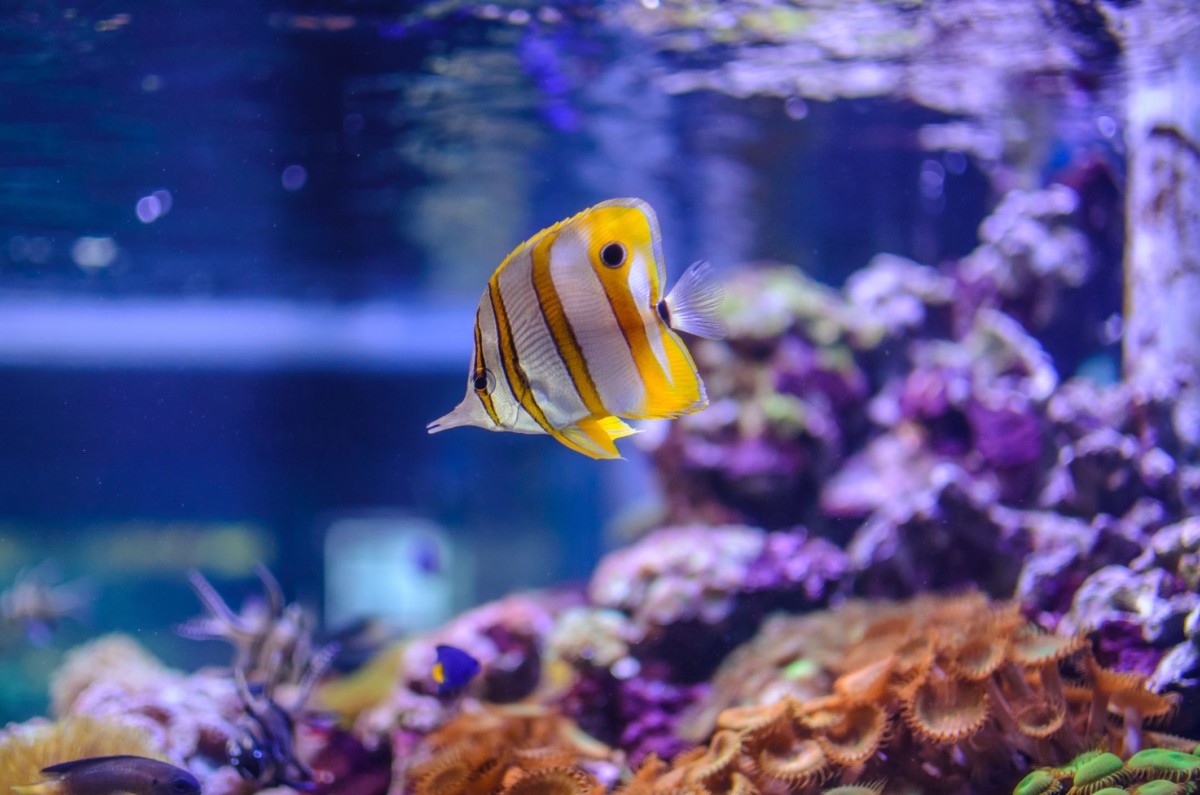The Beauty And Variety Within A Saltwater Aquarium
Due to the higher cost and increased effort required for upkeep, a saltwater aquarium is often reserved for more experienced aquarium keepers.
These aquariums may cost anywhere from around $650 for a fish only with a live rock set up to $1300 or more for purchasing and setting up a coral reef aquarium. The cost varies depending on the kind of saltwater fish tank setup that is selected.
Saltwater aquarium fish are notorious for being difficult to care for as well as expensive, often costing about $15 per but sometimes going for much more than that.
However, most people would agree that freshwater aquarium fish are not nearly as beautiful as their saltwater counterparts, and that saltwater aquarium fish are more stunning than their freshwater counterparts.
There are 3 sorts of setups for saltwater aquariums.
Fish-only aquariums
The least expensive options are fish-only aquariums since they exclude the cost of live rock. However, since they do not include any living rock, these fish tanks need to have their water changed more often.
The fish that are kept in saltwater aquariums will either be placed in a community tank with fish that are placid and should get along well with other species, or in a semi-aggressive tank, which tends to include individual fish of various varieties that are around the same size.
Anthias, Blennies, Dartfish, Cardinalfish, Chromis, Gobies, Squirrelfish, and Seahorses are some of the community fish that may be found here. Angelfish, Clownfish, Damselfish, Scorpionfish, Rays, Triggerfish, and Tangs are all examples of species that fall into the aggressive category.
It is of the utmost importance to do a study on the saltwater aquarium fish in terms of the nutritional requirements, adult size, temperaments, water conditions, amount of care required, and whether or not they are safe for reefs.
Simply fish and live rock aquariums
The saltwater fish tank configuration that has the most popularity is one that contains simply fish and live rock. This piece of porous rock is teeming with live creatures that function as a natural biological filter for the aquarium, assisting in the removal of nitrates from the water.
The fish and invertebrates in the tank may use these organisms as a source of food, and they also give places for the fish to hide. Because one to two pounds of rock is required for each gallon of water in this kind of saltwater fish tank, the one and only drawback is that purchasing the live rock for the aquarium might end up being the most expensive component.
Reef aquariums
Reef aquariums place an emphasis on the cultivation of corals and anemones as well as the maintenance of other invertebrates. Crabs, sponges, lobsters, shrimps, clams, feather dusters, sea cucumbers, scallops, snails, starfish, and urchins are all examples of saltwater invertebrates.
Other examples include sea cucumbers and sea snails. These fish tanks and aquariums need extensive upkeep on a regular basis in addition to pricey gear. There is really nothing else in the world that can compete with the spectacular beauty of a coral reef aquarium for those aquarists who have the time, money, and energy to devote to maintaining one.
The minimum capacity for a saltwater aquarium should be at least 20 gallons, and the optimal size should be far bigger than this. As a result of the lower oxygen content of seawater, marine life requires more space than freshwater species do in order to thrive.
Larger fish tanks and aquariums not only provide a more stable environment for saltwater fish, which are more sensitive to changes in water quality but also provide more room for marine life, which requires more space than freshwater species. In order to successfully set up marine aquariums, you will need a high-quality substrate such as sea sand, crushed coral, or dolomite.
Along with the acquisition of living rock, which functions as a natural biological filter, effective purification processes are desired with the goal of maintaining nitrite concentrations at or below 20 ppm.
Lighting is required to promote the growth of marine plants and to improve the overall aesthetic of the tank. Lighting settings in a reef aquarium need to be exceedingly intense.
The temperature of the majority of saltwater aquariums has to be kept between 75 and 80 degrees Fahrenheit and often requires the use of a heater.
The acquisition of power heads for the flow of water, hydrometers, protein skimmers, aquarium test kits, water additives, and the salt mix is going to be very necessary.
In addition, a refugium for the cultivation of live foods and a reverse osmosis filter unit are necessities for a coral reef aquarium.
The salinity, alkalinity, pH levels, calcium, nitrate, and nitrite levels, as well as the temperature, are some of the water-related factors that need to be carefully monitored using the right test kits.
Marine aquariums need regular maintenance, including thorough cleaning and periodic water changes. It is necessary to prepare the replacement water several days in advance by combining salt that was manufactured with water that has undergone reverse osmosis or water that came from a cleaning unit.

